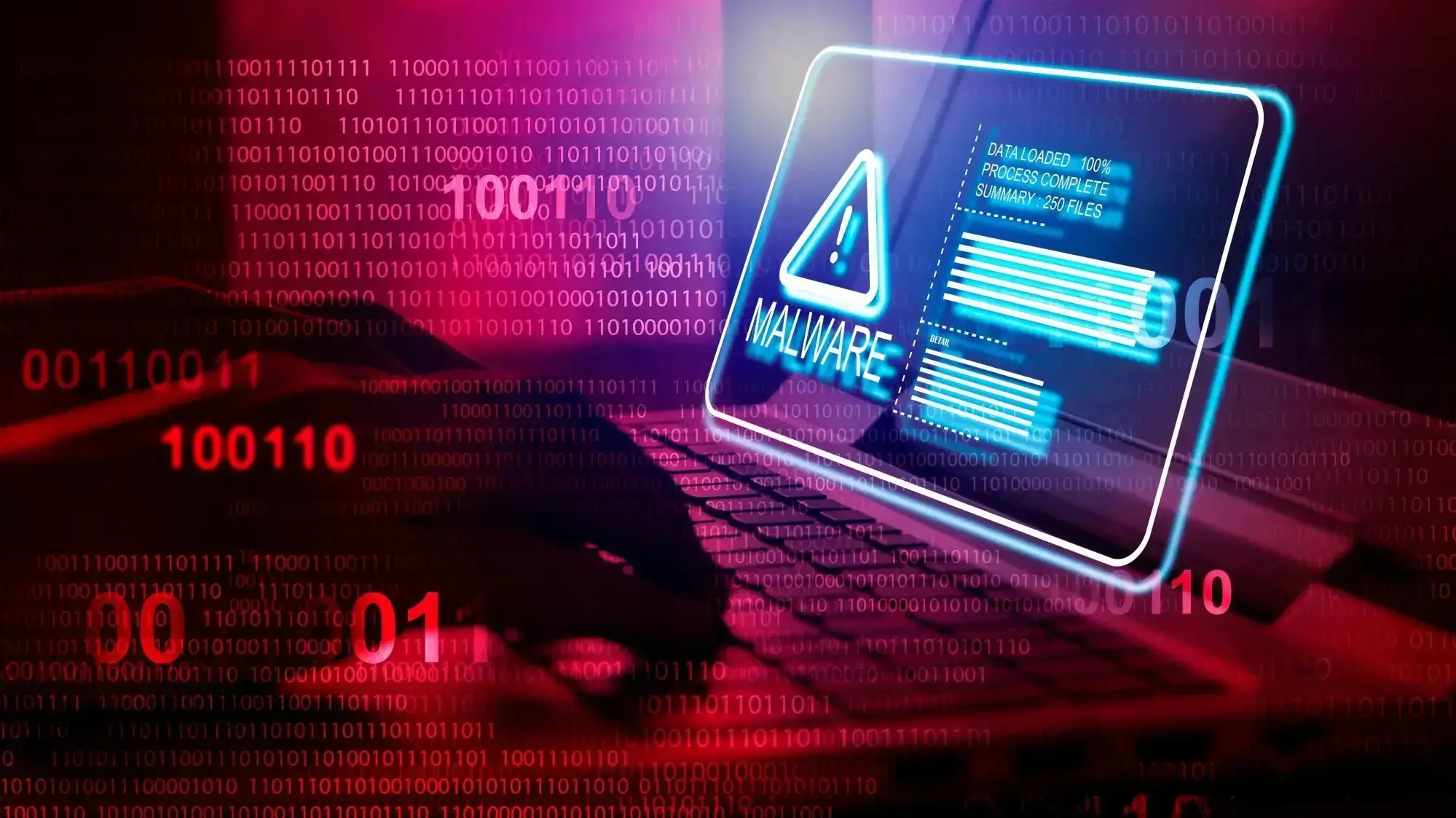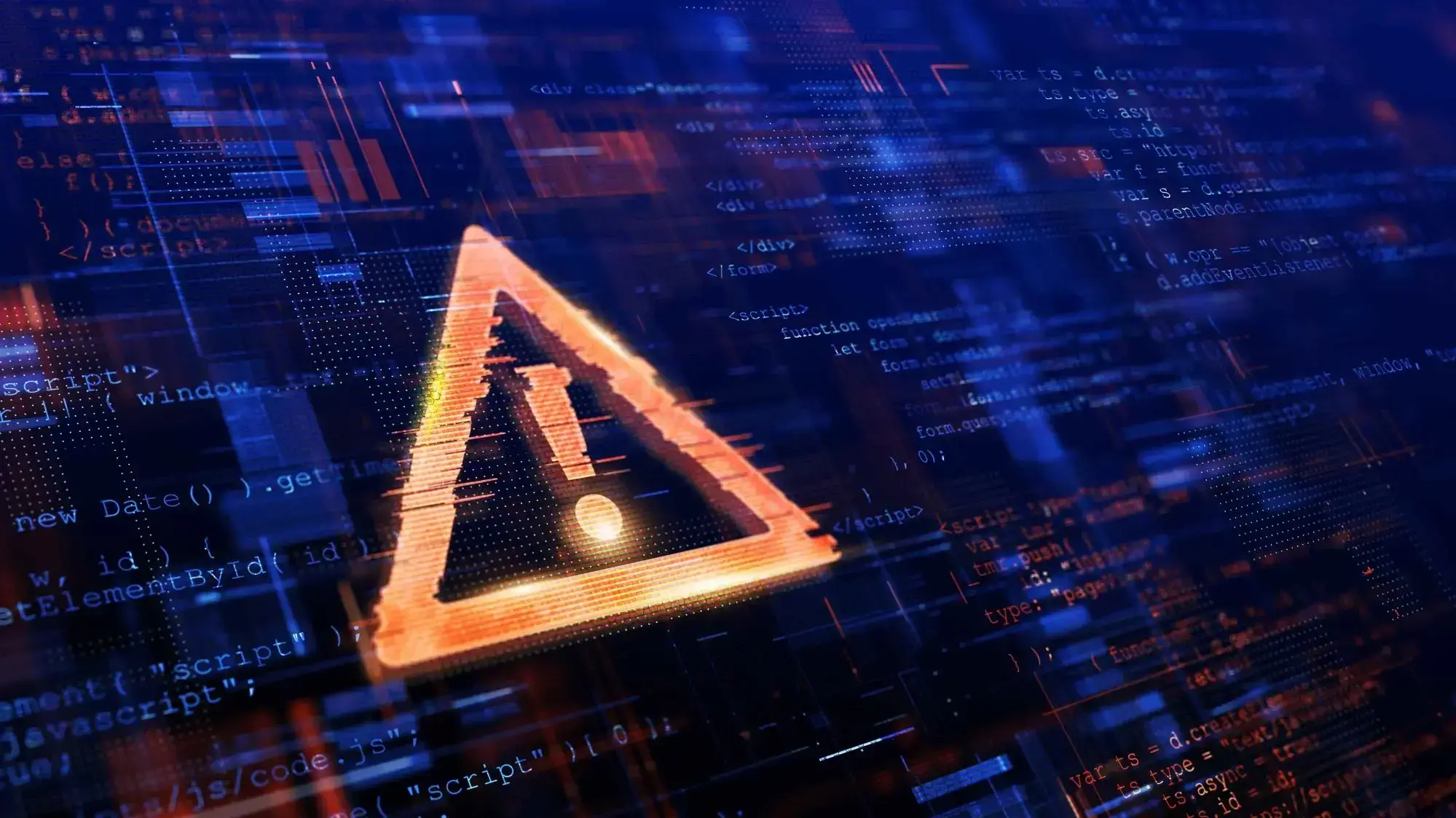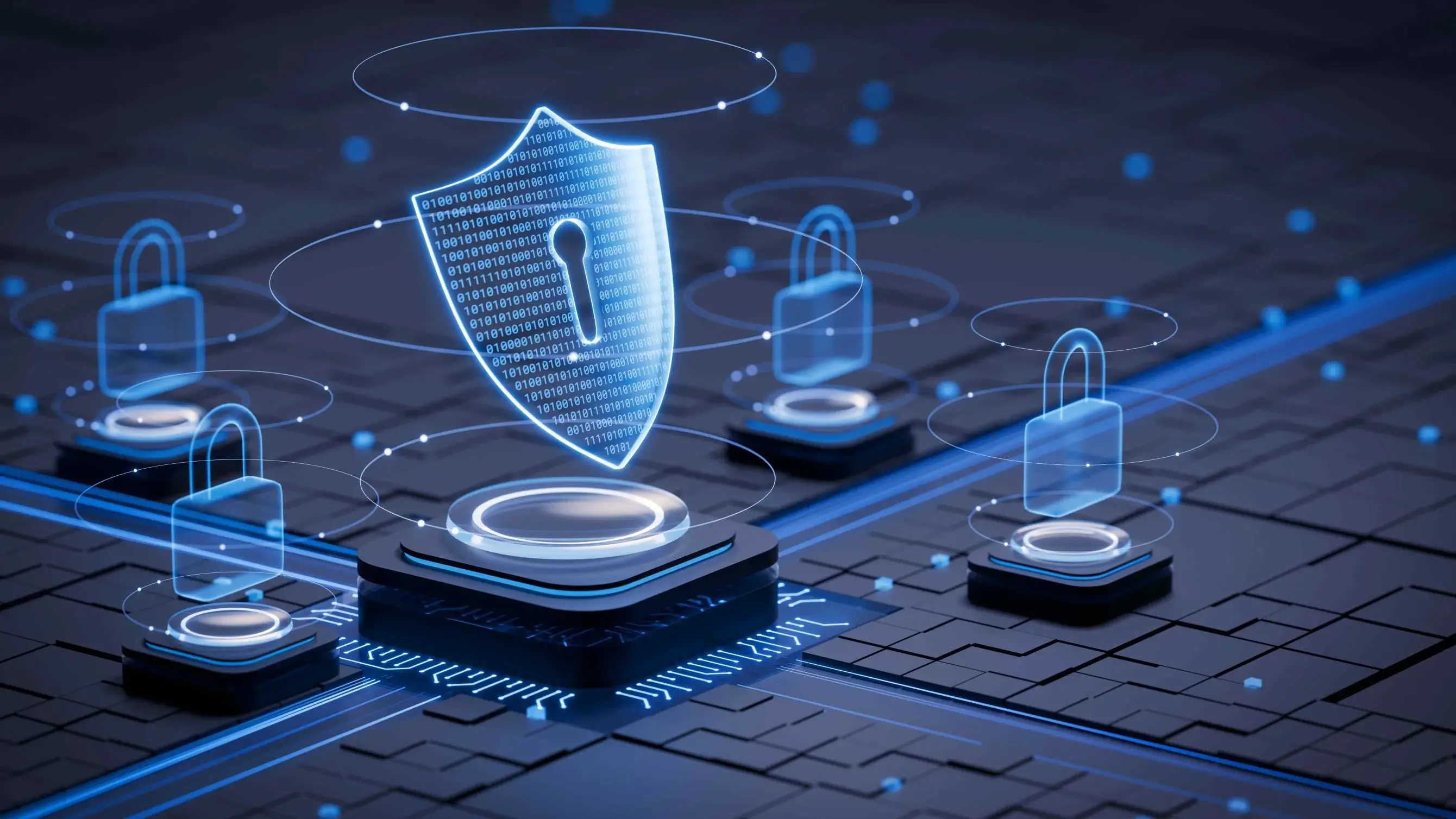With cyberattacks on the rise, malware and ransomware continue to cause widespread financial and operational disruptions across industries. Malware and ransomware remain among the most damaging threats, with recent tactics like double extortion ransomware encrypting data and threatening to leak sensitive information.
Understanding these threats helps strengthen cybersecurity defenses. This article breaks down the key differences between malware and ransomware, their impact, and how to defend against them.
What is Malware?

Malware, short for malicious software, refers to any software designed to infiltrate, damage, or disrupt devices, networks, or data without the user's consent.
Cybercriminals use it to steal information, gain unauthorised access, or cause system malfunctions. Notable examples of malware attacks include the ILOVEYOU worm in 2000, the Zeus Trojan in 2007, and the Stuxnet worm in 2010.
Common Types of Malware
1. Viruses: Viruses are malicious programs that attach themselves to legitimate files or software. They spread when the infected file is executed, often causing damage to data, software, or system performance.
2. Trojans: Trojans disguise themselves as legitimate software to trick users into installing them. Once installed, they allow unauthorized access to systems, enabling cybercriminals to steal data or gain control of the device.
3. Spyware: Spyware operates in the background, secretly monitoring user activity. It collects sensitive information such as passwords, credit card details, and browsing habits without the user's knowledge.
4. Worms: Worms are self-replicating programs that spread across networks without requiring any user interaction. They can consume bandwidth, slow down systems, and cause widespread damage across connected devices.
5. Adware: Adware displays unwanted advertisements on devices, often slowing down system performance. It may also collect user data to deliver targeted ads or sell information to third parties.
How Malware Spreads
Malware can infiltrate systems through several methods using:
Phishing Emails: Malicious links or attachments disguised as legitimate messages.
Infected Software Downloads: Applications from untrusted sources carrying hidden malware.
Compromised Websites (Drive-by Downloads): Websites that automatically download harmful files without user consent.
Removable Storage Devices: USB drives or external devices containing infected files.
Exploiting Software Vulnerabilities: Gaining unauthorized access through outdated or unpatched software.
What is Ransomware?

Ransomware is a type of malware that encrypts files or locks devices, blocking access to data until a ransom is paid. Cybercriminals typically demand payment in cryptocurrency to avoid tracing. It poses severe risks to individuals and organisations, often causing financial losses, data breaches, and operational disruptions.
Notable ransomware attacks include WannaCry (2017) and REvil (2021), which impacted thousands of systems globally.
Common Types of Ransomware
1. Encrypting Ransomware: Encrypting ransomware encrypts files on a victim's device, rendering them inaccessible. Cybercriminals demand payment, often in cryptocurrency, in exchange for the decryption key. A notable example is WannaCry, which affected thousands of systems globally.
2. Locker Ransomware: Locker ransomware locks users out of their devices without encrypting files, preventing access to the entire system. Victims are shown a ransom demand on their screen, urging them to pay to regain access. Reveton is a well-known example of locker ransomware.
3. Scareware: Scareware displays fake warnings or alerts claiming that the device is infected with malware. It tricks users into paying for unnecessary or malicious software to remove non-existent threats. This type of ransomware often relies on fear and urgency to manipulate victims.
4. Doxware (Leakware): Doxware, also known as leakware, threatens to publish sensitive information unless a ransom is paid. This type of ransomware targets individuals or organizations with confidential data. It exploits the fear of reputational damage or legal consequences to pressure victims into paying.
5. Ransomware-as-a-Service (RaaS): Ransomware-as-a-Service (RaaS) allows cybercriminals to purchase or rent ransomware tools from developers. This model lowers the barrier to entry into cybercrime, enabling attackers with limited technical skills to launch ransomware attacks. The developers often receive a share of the ransom payments as part of the service agreement.
How Ransomware Spreads
Ransomware can infiltrate systems through various methods using:
Phishing Emails: Deceptive messages with malicious attachments or links.
Malicious Downloads: Infected files from untrusted sources.
Remote Desktop Protocol (RDP) Exploits: Unauthorized access through weak or stolen credentials.
Drive-by Downloads: Automatic installations from compromised websites.
Software Vulnerabilities: Exploiting unpatched software to gain entry.
Key Differences Between Malware and Ransomware
Understanding the distinctions between malware and ransomware helps in developing targeted security measures. While ransomware is a type of malware, its behaviour and impact set it apart from other malicious software.
| Aspect | Malware | Ransomware |
|---|---|---|
| Purpose and Behavior | Disrupt systems, steal data, or spy on users. | Encrypt files or lock systems to extort money from victims. |
| Impact on Systems and Users | Varies from minor inconvenience to complete system compromise. | Severe disruption, often rendering critical data or systems inaccessible. |
| Methods of Infection | Infected email attachments, malicious downloads, compromised websites, or USB devices. | Phishing emails, software vulnerabilities, or malicious links. |
| Recovery Options | Antivirus removal tools, system restoration, or reinstalling software. | Data restoration from backups, paying ransom (not recommended), or decryption tools (if available). |
While malware can cause long-term damage, ransomware delivers immediate and often irreversible consequences, making it one of the most devastating cyber threats.
Malware and Ransomware Workflow
Both malware and ransomware follow similar stages in their attack lifecycle, though their impact differs:
1. Infection: The system is infiltrated through phishing emails, malicious downloads, software vulnerabilities, or other entry points.
2. Installation: The malicious software installs itself and gains control of the system.
3. Spread and Action: Malware may replicate across the system, steal data, or monitor user activity, while ransomware encrypts files or locks devices.
4. Impact: Malware can cause system slowdowns, data theft, or corruption, while ransomware renders data inaccessible and demands payment.
5. Outcome: Victims either remove malware using security tools or restore data from backups. For ransomware, victims face the choice of paying the ransom (with no guarantee of recovery) or relying on backups for data restoration.
Impact of Malware and Ransomware
Financial Losses: Organisations may face ransom payments, data recovery costs, and legal penalties, with global ransomware damages projected to exceed $20 billion annually.
Operational Disruption: Attacks can cause system downtime, halting business operations and resulting in productivity losses. Businesses experience an average downtime of 21 days after ransomware attacks.
Data Breaches: Sensitive data such as customer information, financial records, and intellectual property can be stolen or exposed.
Reputation Damage: Loss of customer trust and negative publicity can impact long-term business relationships.
Legal and Regulatory Consequences: Non-compliance with data protection regulations may result in fines and legal actions.
How to Protect Against Malware and Ransomware
A comprehensive protection strategy is essential to safeguarding systems against malware and ransomware attacks. By combining technology, education, and strategic planning, organisations can build a robust defense against cyber threats.
1. Regular Software Updates and Patches
Keeping software up to date is the foundation of cybersecurity. Automatic updates ensure that operating systems and applications are patched as soon as fixes become available, closing vulnerabilities that hackers might exploit.
Regularly reviewing and prioritizing updates for critical systems and sensitive data applications further strengthens defenses.
2. Endpoint Detection and Response (EDR) Tools
While software updates address known vulnerabilities, EDR tools provide proactive protection against unknown threats.
These tools monitor devices in real-time, detecting suspicious activities like unauthorized encryption or unusual system changes. Advanced solutions, such as CrowdStrike and Microsoft Defender, not only identify threats but also automate responses, stopping attacks before they spread.
3. Employee Training and Awareness
Technology alone is not enough, people play a critical role in cybersecurity. Regular training sessions help employees recognize phishing emails and social engineering tactics.
Simulated phishing tests reinforce these lessons, while clear guidelines on password creation and identifying suspicious links empower employees to act as the first line of defense.
4. Backup Strategies
Despite best efforts, breaches can still occur. A solid backup strategy ensures that data can be restored quickly, minimizing downtime.
The 3-2-1 backup rule keeping three copies of data on two different media, with one off-site offers reliable redundancy. Automating backups and routinely testing recovery processes guarantees that backups remain effective when needed most.
5. Network Segmentation
Limiting access within networks reduces the damage an attacker can cause. Network segmentation separates critical systems from less sensitive areas, preventing malware from spreading unchecked.
Firewalls and Virtual LANs (VLANs) help enforce these boundaries, while zero-trust policies ensure that only verified users and devices can access sensitive data.
6. Email Filtering and Firewalls
Email remains a primary attack vector, making filtering solutions a critical layer of defense. Advanced email filters block phishing attempts and malicious attachments before they reach inboxes.
Suspicious attachments can be tested in sandboxed environments, while firewalls restrict network traffic to essential services, further reducing attack surfaces.
7. Multi-Factor Authentication (MFA)
Even if attackers steal login credentials, MFA can stop them from accessing critical systems. Using authenticator apps instead of SMS codes enhances security by making it harder for attackers to bypass verification.
Implementing MFA across email accounts, cloud services, and VPNs adds another layer of protection.
8. Incident Response Plan
Preparation is key to minimizing the impact of cyberattacks. An incident response plan outlines how to detect, contain, and recover from an attack. Assigning clear roles, conducting regular rehearsals, and updating the plan as threats evolve ensures that the organisation can respond swiftly and effectively.
By integrating these strategies into daily operations, organisations can create a multi-layered defense that not only reduces the likelihood of infection but also improves resilience against cyber threats.
What to Do if Infected
Taking immediate action is crucial when dealing with malware or ransomware infections to minimize damage and prevent further spread.
Isolate the Affected System: Disconnect the infected device from the network to stop the malware from spreading to other systems.
Report the Attack: Notify your IT department or cybersecurity team immediately. For businesses, report ransomware attacks to relevant authorities or cybersecurity agencies.
Use Decryption Tools (If Available): Research or consult cybersecurity experts to find free decryption tools provided by security companies or law enforcement.
Restore from Backups: If recent backups are available, wipe the infected system and restore data from clean backups to avoid data loss.
Avoid Paying Ransom (If Possible): Paying the ransom does not guarantee data recovery and may encourage further attacks. Explore all recovery options before considering payment.
Quick and decisive action can limit the impact of malware and ransomware attacks, helping organisations recover faster without falling victim to extortion.
Case Studies of Major Malware & Ransomware Attacks
1. REvil Kaseya Attack (2021)
The REvil ransomware group exploited a vulnerability in Kaseya’s remote monitoring software, affecting up to 1,500 businesses globally.
The attackers encrypted data and demanded a $70 million ransom, making it one of the largest ransomware attacks in history. This case highlighted the risks posed by third-party service providers and the importance of patch management.
2. Colonial Pipeline Attack (2021)
The DarkSide ransomware group targeted Colonial Pipeline, a major fuel pipeline operator in the U.S., disrupting fuel supply across the East Coast.
The company paid a $4.4 million ransom, though U.S. authorities later recovered part of the payment. This attack emphasized the vulnerability of critical infrastructure and the importance of cybersecurity for essential services.
3. Log4Shell Exploit (2021)
A vulnerability in the popular Log4j logging library allowed attackers to execute remote code on millions of servers worldwide. While not ransomware itself, the exploit was quickly leveraged by ransomware operators.
This incident highlighted the dangers of open-source software vulnerabilities and the importance of prompt patching and software inventory management.
4. Costa Rica Government Ransomware Attack (2022)
The Conti ransomware group targeted several Costa Rican government agencies, crippling public services for weeks. The attackers demanded a $20 million ransom and leaked sensitive data online.
This attack demonstrated the rising threat to public sector organisations and the need for robust incident response plans.
5. MOVEit Transfer Exploit (2023)
Cybercriminal group Cl0p exploited a zero-day vulnerability in the MOVEit Transfer file-sharing software, affecting hundreds of organisations globally, including financial institutions and government agencies.
The attackers threatened to publish stolen data unless a ransom was paid. This case showed the risks of file-sharing applications and the importance of securing data transfers.
Conclusion
Malware and ransomware present significant cybersecurity threats, each with distinct attack methods and impacts. While malware covers a wide range of harmful software, ransomware is particularly disruptive due to its ability to encrypt files and demand payment.
Understanding these threats is key to developing targeted security strategies. Proactive measures such as regular software updates, endpoint protection, and employee training are essential in preventing infections. Implementing robust backup systems and having a clear incident response plan can minimize damage in case of an attack.
By staying informed, conducting cybersecurity audits, and adopting a layered security approach, organisations can strengthen their defenses and reduce the risk of falling victim to evolving cyber threats.
Frequently Asked Questions
How do phishing attacks contribute to malware infection?
Phishing attacks trick users into clicking on a malicious link or opening infected attachments that contain malicious code. These phishing attempts can deploy ransomware or other malware onto computer systems, leading to data loss or corruption.
How can antivirus software help prevent malware?
Antivirus software can detect malware by scanning computer systems for known malicious code and blocking malicious websites. It helps prevent malware from exploiting vulnerabilities and protects data from potential malware attacks.
What are the best practices to protect data from ransomware attackers?
Regular backups and data backup solutions are essential to protect data from ransomware attackers. It is also important to avoid known malicious sites, use updated web browsers, and install cybersecurity services to prevent malware infections.
How do ransomware attackers evade detection?
Ransomware attackers may use fileless malware or trojan horses to evade detection. These methods exploit security weaknesses and can provide remote access to infected computers without leaving a trace on the operating system.

Yetunde Salami is a seasoned technical writer with expertise in the hosting industry. With 8 years of experience in the field, she has a deep understanding of complex technical concepts and the ability to communicate them clearly and concisely to a wide range of audiences. At Verpex Hosting, she is responsible for writing blog posts, knowledgebase articles, and other resources that help customers understand and use the company's products and services. When she is not writing, Yetunde is an avid reader of romance novels and enjoys fine dining.
View all posts by Yetunde Salami




















